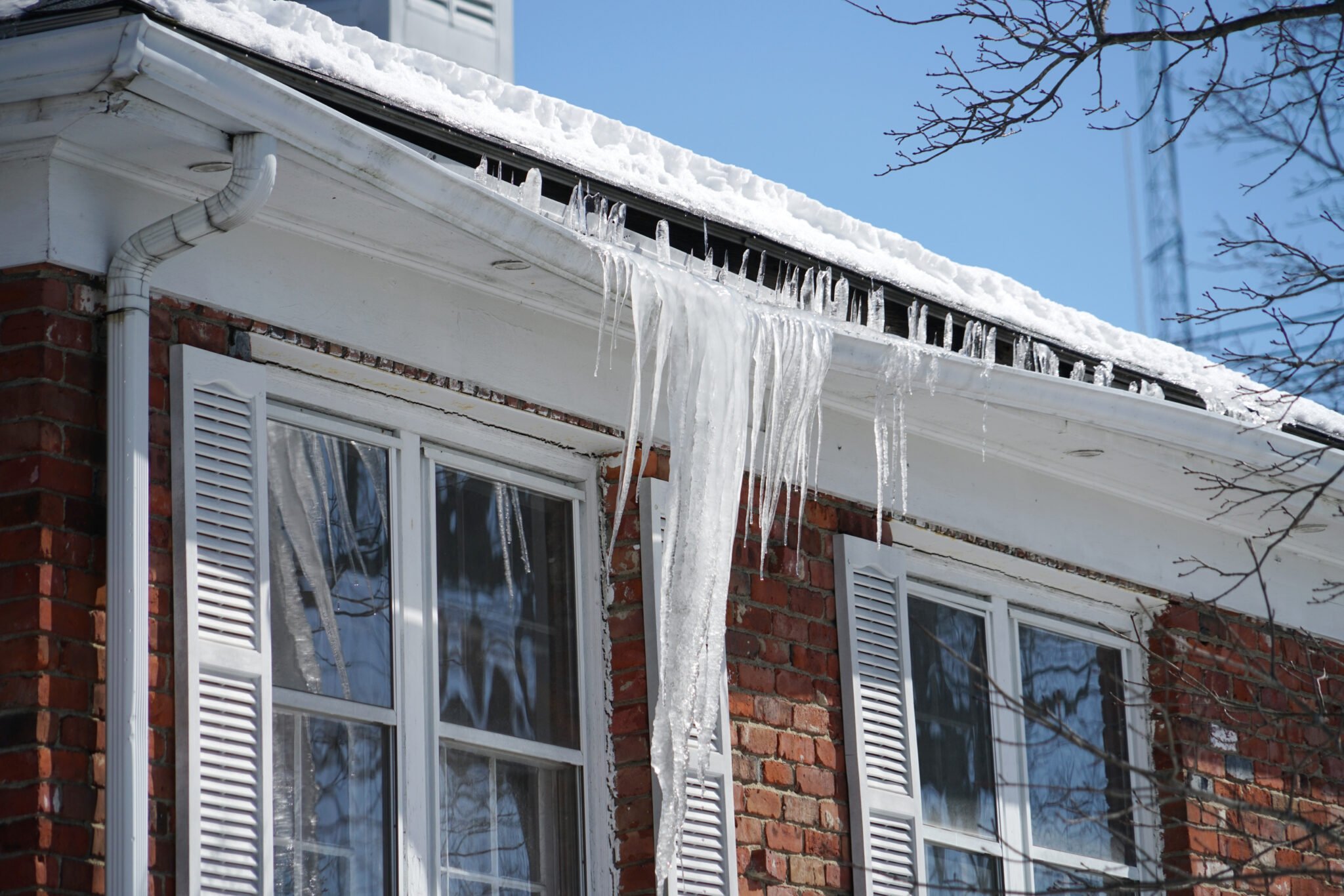There are several reasons why a roof might leak, but a common culprit is often damaged or poorly installed roof flashing. You may have never heard of roof flashing, but it is a critical part of your roofing system. Below, we’ll discuss all things roof flashing, including what it is, why it’s so important, and what you can do to maintain it.
What is Roof Flashing?
Roof flashing is a crucial component of your roof. Often made from thin metal, it butts up against the roof’s joints and acts as a seal. This protects areas where water could seep, like chimneys, skylights, vents, and dormers.
Every roof needs flashing, whether it’s a house, apartment building, or business. Without properly installed roof flashing, your roof’s weak points can soak up water and drive it into your home, saturating the roof decking and siding. Over time, this can cause a leaking roof and puts your house at risk of developing mold, rot, and even structural damage.
Types of Roof Flashing
There are various types of flashing, each helping to protect a specific roof area. Below are the most common types of flashing and their roles in safeguarding your home.
- Chimney flashing: Chimney flashing protects the chimney and roof. It often consists of base or step flashing, too.
- Step flashing: Step flashing is a rectangular piece of flashing that is layered with shingles to protect joints.
- Drip edge flashing: Drip edge flashing is installed over a roof’s edge and the top of the fascia. The fascia is the trim beneath the roofline that connects the walls to the rooftop. This is common around areas like eaves or gables.
- Skylight flashing: Skylight flashing ensures a watertight seal around skylights. It often includes continuous flashing and step flashing.
- Vent pipe flashing: Vent pipe flashing is installed around plumbing vents.
- Counter flashing: This type of flashing is installed over the step flashing to push water away from vertical walls, preventing water from seeping behind the headwall (the junction of a roof plane and a wall) and sidewall flashing. Counter flashing typically works with step flashing to surround and protect chimneys.
- Kickout flashing: Kickout flashing is found where the roof edge connects to a sidewall. It pushes water to the gutters so it does not run down the side of the building and damage the siding.
- Drip edge flashing: Drip edge flashing is installed under shingles and over the back of the gutter. This protects eaves and rakes by preventing water from seeping between the gutter and fascia.
- Base flashing: Base flashing is used where the roof plane and a vertical protrusion come together.
Common Roof Flashing Materials
Several different types of materials are used for roof flashing, each with its own advantages.
- Galvanized Steel: Galvanized steel is the most popular roof flashing material. Installers and professional roofing companies prefer it because it is coated with zinc to prevent corrosion and rust.
- Aluminum: Aluminum flashing is often readily available, lightweight, easy to install, and even more corrosion-resistant than galvanized steel.
- Copper: Copper flashing develops a unique green color as it oxidizes and is typically installed to match a copper roof and fixtures.
- Zinc: Zinc is durable and highly resistant to corrosion. Over time, it develops a green incrustation similar to copper.
Signs of Damaged Roof Flashing
Nothing lasts forever, and that is true for roof flashing, too. Depending on the material, flashing can typically last 15 to 35 years. Over time, it can show signs of wear and tear or damage from storms and severe weather. If you think you have roof flashing damage or it needs replacing, check for the following signs:
Leaks Throughout Home
Internal leaks are a messy sign that your roof is not doing its job. If you have a leak near a window, skylight, or chimney, your roof flashing may be the cause. To catch any leaks early, check your attic regularly for dampness, water stains, and mold.
Visible Damage in Flashing
It doesn’t take much for water to seep under roof shingles. Small holes, cracks, dents, and broken or missing pieces in your roof flashing are enough to create an issue. In addition, flashing that has bent or warped metal can also allow water to creep under it. Anything that has broken the flashing’s seal or damaged the metal can cause significant problems if not addressed early.
Rust and Corrosion
Metal roof flashing can develop rust and corrosion as it ages. Roof flashing is especially susceptible to rust and corrosion in regions with high salt exposure or acidic rain. This will break down the flashing, allowing water to seep through gaps or crevices.
Roof Flashing FAQs
Want to know more about roof flashing? Here are a few of our most common questions answered below.
Oaks Roofing & Siding: Quality You Can Trust
At Oaks Roofing & Siding, we offer various dumpster sizes to meet your needs. Our dedicated representatives are always here to answer questions so your rental process goes smoothly. Call or contact us today, and we'll be happy to help.



